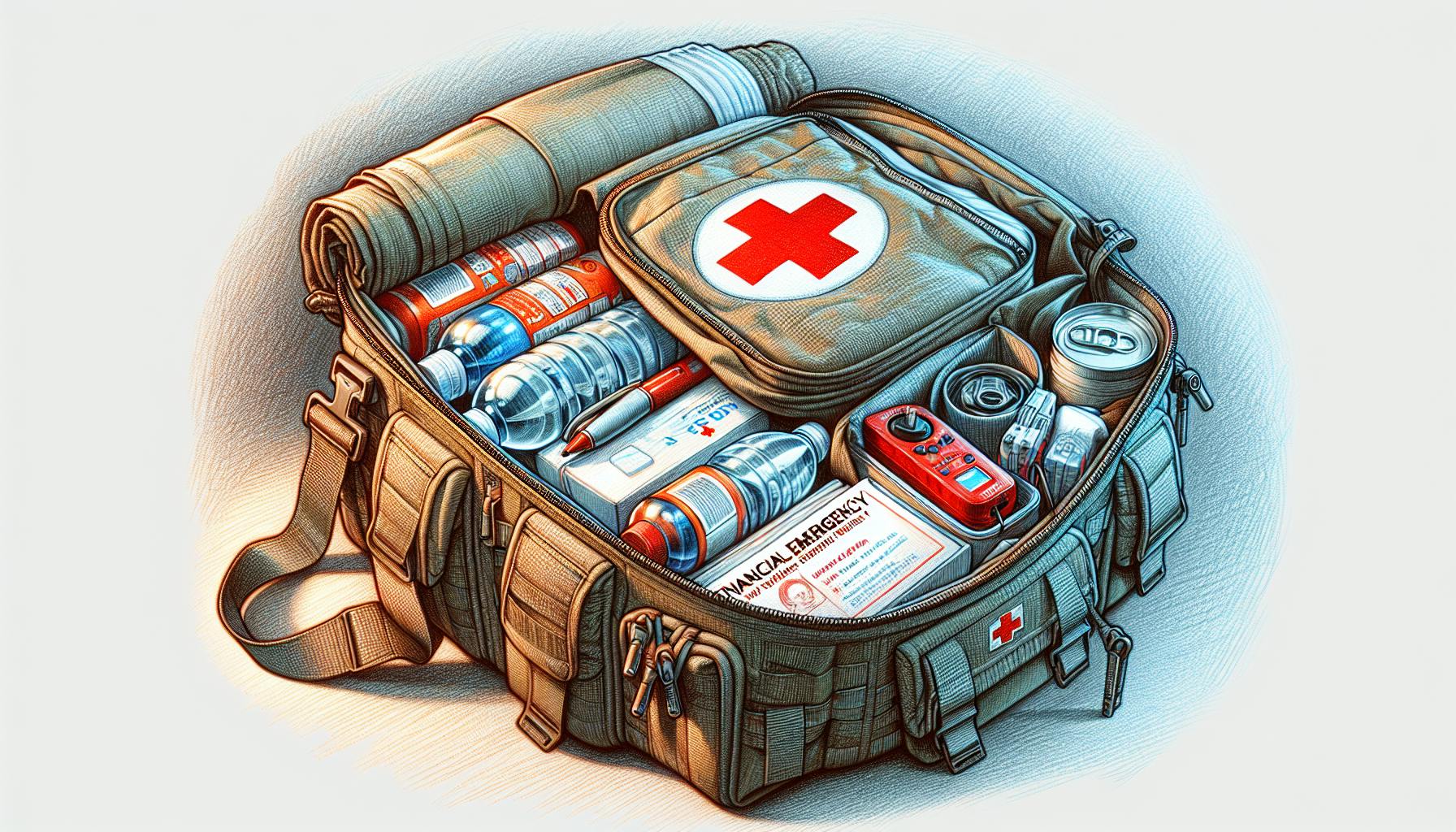Introduction to SHTF Food Storage Essentials
Having a well-stocked food supply is absolutely critical in a grid-down scenario or emergency situation when normal supply chains break down. Proper nutrition provides the calories, macronutrients, and micronutrients needed to maintain health and survive when the grid goes down. Shelf-stable foods with long expiration dates are ideal for putting together a robust food storage stash. The goal is to have versatility and well-rounded nutrition available in your stockpile. In this article, we'll cover the key food categories you should prioritize when building your emergency food storage pantry for disaster preparedness, including canned goods, grains, preserved foods, fats and oils, and baking essentials.
Canned and Jarred Foods
Canned fruits, vegetables, beans, soups, meats, and seafood can provide essential calories, nutrients, and variety to your survival food supply. Look for options low in sodium, such as Amy's or Eden Foods canned beans, and minimal processing when possible. Stack cans in a cool, dark place and inspect regularly for bulges or rust. Mason jars allow you to store home-canned foods if you prepare them properly. Prioritize nutrient-dense canned choices like tomatoes, beans, tuna, and salmon that are sustainably sourced.
Grains, Legumes, and Pasta
Rice, beans, lentils, oats, quinoa and pasta offer valuable carbohydrates, fiber, and plant-based protein. Choose whole grain versions whenever possible for added nutrition. Store in airtight containers in a cool, dry area. Opt for versatile ingredients like rice, beans, and pasta that offer flexibility in meals. Consider sprouting beans, seeds, and legumes to boost nutrients before cooking.
Preserved and Dried Foods
Jerky, dried fruits, and freeze-dried produce like strawberries provide concentrated nutrition in shelf-stable form. Look for options with lower sodium and minimal preservatives when possible. Vacuum-sealed pouches prevent oxygen exposure to extend shelf life. Rotate stock and watch expiration dates carefully on dried foods. Quality protein sources like jerky and pemmican are great options with long shelf lives.
Fats and Oils
Oils like coconut oil and avocado oil provide concentrated calories and healthy fats with longer shelf lives. Store them in a cool area away from light and heat to prevent rancidity. Use Mylar bags and oxygen absorbers to prolong shelf life. Rotate stock and watch for changes in smell or texture over time.
Baking Essentials
Flour, sugar, yeast, baking powder, and baking soda allow you to make homemade breads and baked goods. Opt for whole grain flours when you can for extra nutrition. Store in airtight containers in a cool, dry spot. Double bag or use Mylar bags to prevent moisture exposure. Shelf-stable milk powder and powdered eggs provide more baking options.
Food Storage Methods and Supplies
Certain supplies and methods can significantly extend the shelf life of your food stockpile. Mylar bags, oxygen absorbers, food grade plastic buckets, and proper storage conditions are key. Correct labeling and rotating stock also helps.
Mylar Bags
Mylar bags are impermeable to moisture and oxygen, especially when used with oxygen absorbers. This allows smaller quantities of food to be packaged and stored long term. Mylar bags can also be reused if contents are consumed quickly. They come in various sizes to suit your needs.
Food Grade Buckets
These seal out moisture, pests, light, and oxygen. Opaque buckets prevent light exposure that degrades food over time. Buckets are stackable, mobile, and efficient for organization. Always date and label buckets for easy identification and tracking. Gamma seal lids allow easy access without unsealing.
Oxygen Absorbers
Oxygen absorbers extend shelf life by absorbing oxygen from stored food to prevent spoilage. Use the properly sized absorbers for your container volume. Activate the absorbers before sealing containers. They significantly extend shelf life for dried foods. Oxygen absorbers are inexpensive and single use.
Proper Storage Conditions
Ideally store food in a cool area around 60-70°F if possible. Avoid attics, garages, or areas with major temperature fluctuations. Opaque containers prevent light exposure. Keep storage areas clean and pest-free. Maximize air circulation to prevent condensation from humidity.
Inventory Management
Date all containers for easy tracking. Designate areas for different food types. Use a spreadsheet to catalog all inventory. Set reminders to routinely cycle and replace items. Check older stock regularly for signs of spoilage like mold, caking, or rancid odors.
Essential Nutrients and Food Variety
Nutritional variety is vital for a healthy survival diet. Include well-rounded sources of macros and micronutrients. Be mindful of dietary needs. Consider foraging, sprouting, and supplements to provide essential vitamins and minerals.
Macronutrients
- Protein for muscle maintenance from meats, beans, eggs, dairy
- Healthy fats like olive oil, avocados, nuts for energy
- Complex carbs from whole grains and tubers for steady energy
- Fiber from vegetables, fruits, and whole grains for digestion
- Adequate calories for activity levels and survival needs
Micronutrients
- Vitamin C - citrus, tomatoes, potatoes
- B Vitamins - whole grains, eggs, meat, dairy
- Vitamin A - carrots, sweet potatoes, greens
- Iron - beans, meats, fortified grains
- Zinc - meats, dairy, legumes
Special Dietary Needs
- Allergy substitutions like gluten-free grains, dairy alternatives
- Diabetic-friendly foods with complex carbs and minimal sugar
- Supplements like multivitamins to fill nutritional gaps
- Comfort foods for morale - candy, coffee, tea
- Pet food storage for furry family members
Foraging and Supplementation
- Learn to identify edible wild plants like dandelion, lamb's quarters, and stinging nettle.
- Gather wild berries like blackberries, raspberries, and blueberries in season.
- Tap maple trees for nutrient-rich syrup.
- Grow sprouts and microgreens indoors for fresh nutrients.
- Forage for mushrooms like morels and chanterelles.
Stock Variety for Flexible Meals
- Store diverse ingredients for meal options
- Include herbs, spices, condiments to prevent taste fatigue
- Shelf-stable milk, eggs, butter for baking
- Coffee, tea, sweets for comfort
- Multivitamins to fill nutritional gaps
Water Storage Considerations
Stored water is critical in emergency situations when regular supplies are disrupted. Use proper containers, filtration, and replenishment techniques. Have contingency plans for other water sources.
Storage Methods
- Food grade plastic barrels
- Glass jugs or mason jars
- Stainless steel containers
- Collapsible fabric bags
- Purchased bottled water
Filtration and Purification
- Reverse osmosis systems
- UV sterilization
- Activated carbon filtration
- Boiling or distillation
- Water purification tablets
Recommended Quantities
- Minimum 1 gallon per person daily
- Ideal 3 gallons per person daily
- 2 week supply for short-term
- 3-6 month supply for extended emergencies
- 1 year supply for indefinite grid down
Rotation and Replenishment
- Drink stored water before expiration date
- Periodically inspect containers for leaks
- Refill supply every 6-12 months
- Add fresh water stabilizer as needed
- Have contingency water access plans
Additional Water Sources
- Rainwater collection barrels
- Nearby streams, lakes, ponds
- Melting clean snow
- Underground wells
- Water stored in pipes, water heater
Key Takeaways on SHTF Food Storage
- Stock up on shelf-stable staples like rice, beans, canned goods
- Use proper storage methods like Mylar bags, oxygen absorbers
- Include diverse sources of essential macro- and micronutrients
- Store at least 1 gallon of water per person daily
- Rotate and replenish food and water supplies routinely
- Variety and versatility create a well-rounded stockpile
Proper food and water storage is foundational to survival preparedness. Take steps now to build up reserves, use effective storage techniques, and maintain well-rounded nutrition. Your health and wellbeing depend on it when SHTF. Stay vigilant and ready by keeping your critical supplies in order.


